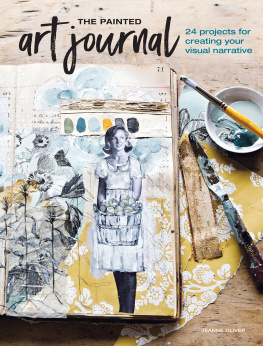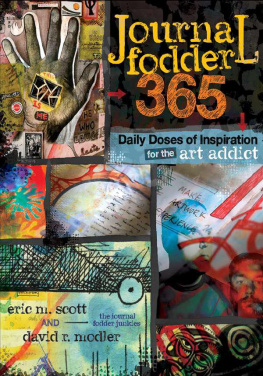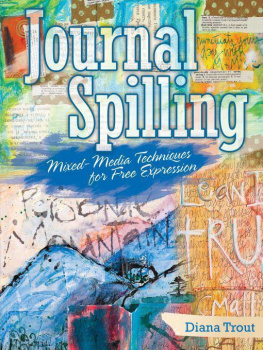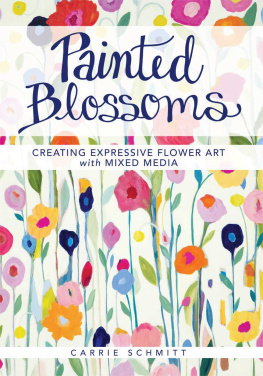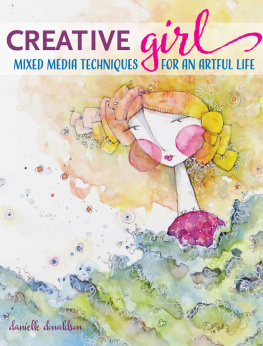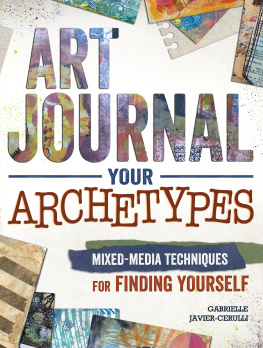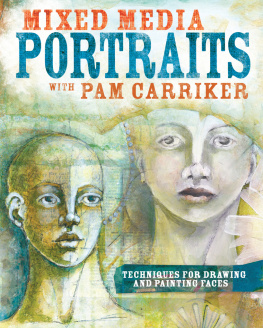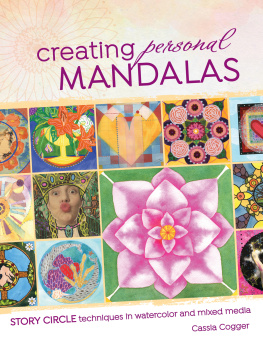Contents
Guide
THE PAINTED
Art Journal
24 Projects for Creating Your Visual Narrative
Jeanne Oliver
CINCINNATI, OHIO
artistsnetwork.com
Contents
CHAPTER 1
Tools and Basic Supplies
CHAPTER 2
The Story
CHAPTER 3
Creative Rituals
CHAPTER 4
Gathering Your Story Elements
CHAPTER 5
Alternative Journal Options
CHAPTER 6
Creating a Portable Studio
CHAPTER 7
Seeing Your Story in Color
CHAPTER 8
Mark Making and Symbolism
CHAPTER 9
Creating Your Timeline
CHAPTER 10
Gathering a Poem
CHAPTER 11
Composition 101
CHAPTER 12
Your DNA
CHAPTER 13
Gathering Your Story
CHAPTER 14
Secret Thoughts
CHAPTER 15
Class Photo
CHAPTER 16
Cast of Characters
CHAPTER 17
Portraits
CHAPTER 18
Beyond the Journal

Dedication
TO MY FAMILY AND THE LAND WHERE I WAS RAISED I can never thank you enough. For the memories, the joy, the brokenness and the healing, I will forever be grateful.
To the small town of Mt. Morris, Illinois, and the people and land that have made up the core of so much of how I find beauty in the simple and everyday, thank you.
This book is dedicated to my family and my hometown.
Introduction
The Painted Art Journal was born from my own discovery about my authentic self and the journey I am on. I believe it is a journey we are all on: to discover who we really are and how to tell that story within our art. I had a deep desire to create art that authentically looked like me and told a story only I could tell.
It was during this time of honoring my gifts and intentional quiet that memories started to flood my mind of Illinois woods, dirt roads, floral wallpaper, my grandparents, cornfields, old farmhouses, sheets drying on the clothesline, silos, small town main street, the home I grew up in, my childhood dreams, the joys and pains from growing up, our brokenness and our joys... so many of the images and memories that make up who I am. As these reflections came rushing back, I asked myself why wasnt I sharing the most authentic stories about who I am, where I came from and where I wanted to go? They had been there right in front of me the whole time, and I had ignored their significance and dishonored the importance of the road I had traveled.
I finally saw that my story was good enough. I had all the stories in me to create deeply authentic art. Seeing and honoring our stories sets us free to discover the art we have longed to create. We have the freedom to walk forward and boldly watch our creativity unfold.
The storytelling and techniques in this book are active exercises in truly looking at your life and story, documenting it and what that means for you and your art. It becomes a part of your legacy and what you give to those around you and yourself. As you begin to gather your story, you will also begin to discover your color palette, imagery, mark making and patterns.
If we have our eyes over someone elses shoulders, and we are looking at what they are creating and the story they are telling, we will inevitably get lost. We go off our own path and far away from our own story and storytelling. In the process our authentic art never gets made.
When I started to see my own stories as meaningful and significant, my art began to change. When I could look back and find my own timeline and defining moments, I was able to start digging deeper as an artist and my creating became more of a time of remembering, honoring, forgiving, healing and celebrating. It made me more intentional about where I wanted to go creatively and how I wanted to share my story and my art.
IF YOU THINK YOUR STORY ISNT GOOD ENOUGH, YOU ARE MISTAKEN.
IF YOU ARE AFRAID TO TELL YOUR STORY, MAYBE IT IS TIME TO FIND FREEDOM.
IF YOU HAVE NEVER TOLD YOUR STORY, IT IS TIME.
IF YOU WANT TO CREATE AUTHENTIC ART THAT NO ONE ELSE CAN CREATELETS GET STARTED.

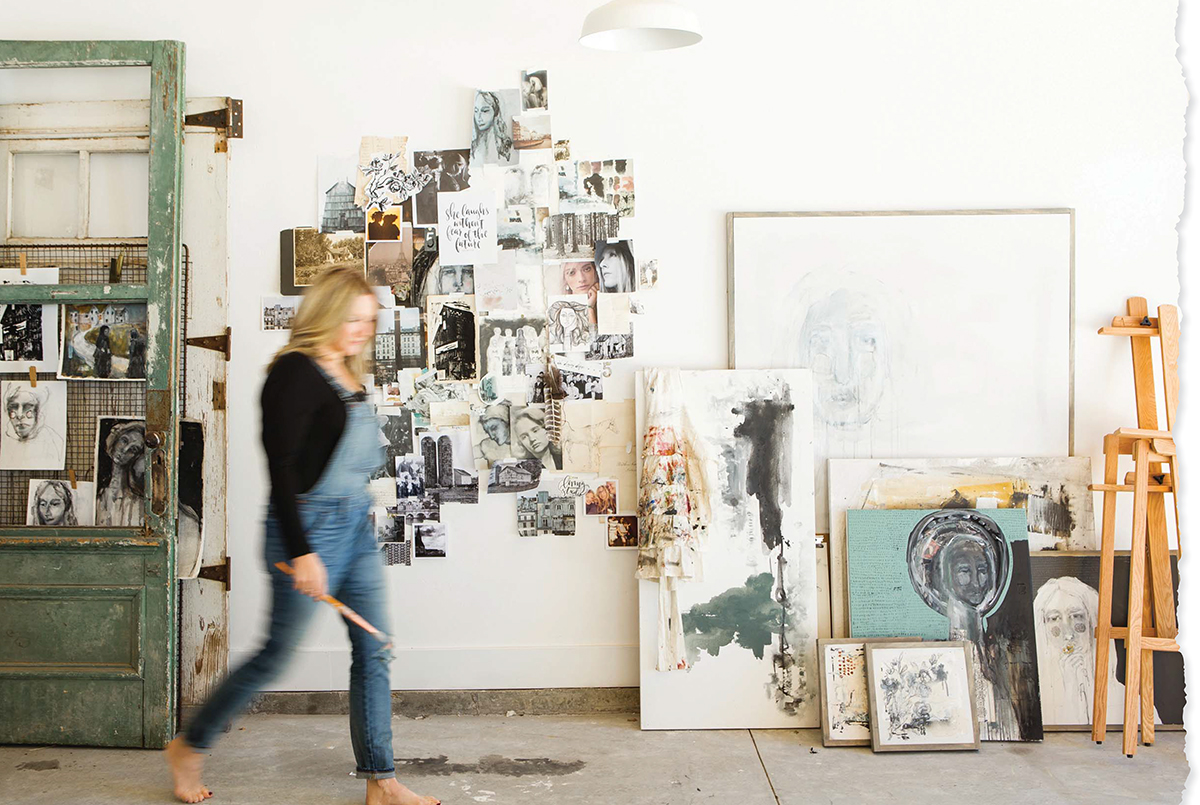
CHAPTER 1
Tools and Basic Supplies
THE MORE YOU CREATE AND GET TO KNOW how you like to use your tools (and the different ways your tools work on different substrates and mixed with other mediums), the more freedom you will also have in your art and storytelling. Most creatives love to get new supplies and we also want to learn what other artists are using. With any art form we are drawn to the supplies and creativity of those around us whom we admire. I would only caution you to not buy any new supplies mentioned in this book until you first see if something you already have will do the job.
I do not want you to have to run out and buy art supplies that you may not use, nor do I want to confuse you into believing buying art supplies is essential to making art. With most of our projects, if I use a Daniel Smith watercolor stick in Yellow Ochre, you could substitute it with a watercolor pencil, water-soluble crayon or even acrylics in the same color. It is more important for you to use the tools in your color palette and to find the techniques that connect with your style than to worry about using the exact same supplies.

Here are some of the materials youll encounter frequently in the projects in this book.
Acrylic Paints
Acrylic paints are fast-drying paints made of pigment suspended in acrylic polymer emulsion. They are water-soluble, but become water-resistant when dry. There is a wide range of pricing and quality you have to choose from. The nicer the quality of paint, the higher the pigment. Because we are working in art journals, you can get away with a lower quality of paint.
Alcohol Ink, Walnut Ink, Black Calligraphy Ink
These inks bring pigment and transparency to your work. The dropper will allow you to add mark making in a semicontrolled technique.
Carbon Paper
A thin paper coated on one side with a dark waxy pigment, often containing carbon, that is transferred by the pressure of writing onto the copying surface below.
Caran dAche Neocolor II Artist Crayons
These are water-soluble crayons with beautiful pigments. They blend easily and are a portable alternative to watercolors. These can also be made permanent by mixing with clear or white gesso.
Charcoal
If there is a medium that I am deeply in love with, it is charcoal. This is one of my go-to tools, and I use many varieties. Some of my favorite forms are a charcoal pencil (easy to take on-the-go and not messy), willow charcoal for sketching and warming up, and Derwent XL charcoals for the size, colors and ability to help me get out of my comfort zone and create large. Charcoal is such a versatile medium and can be mixed with water and gesso to bring about different effects.

